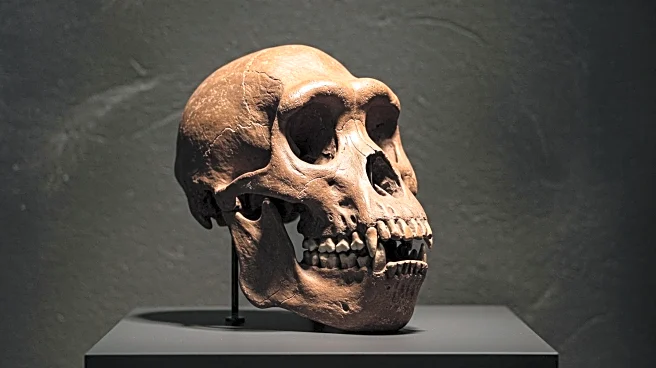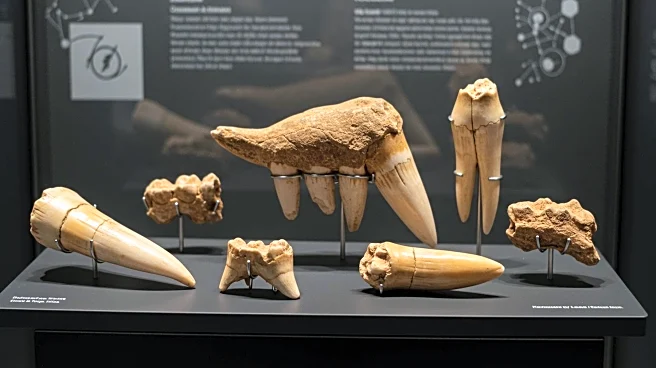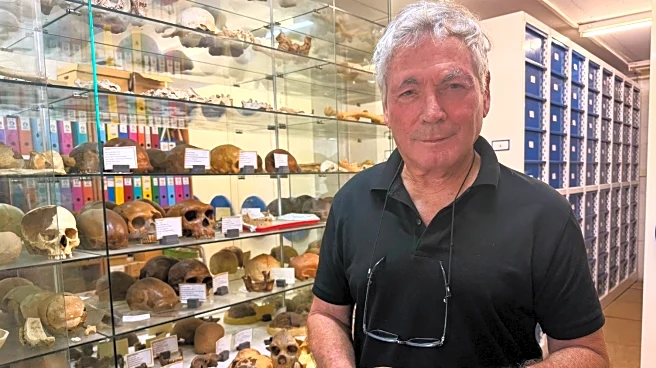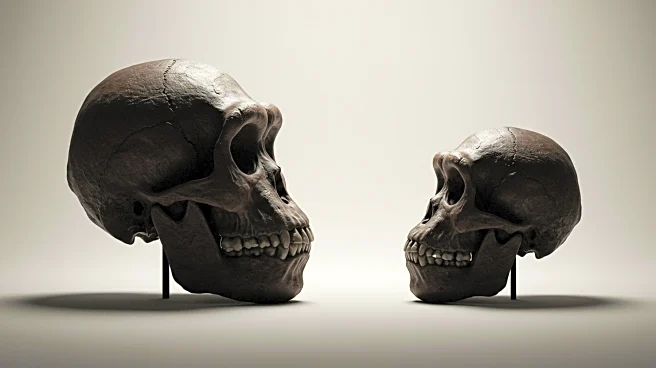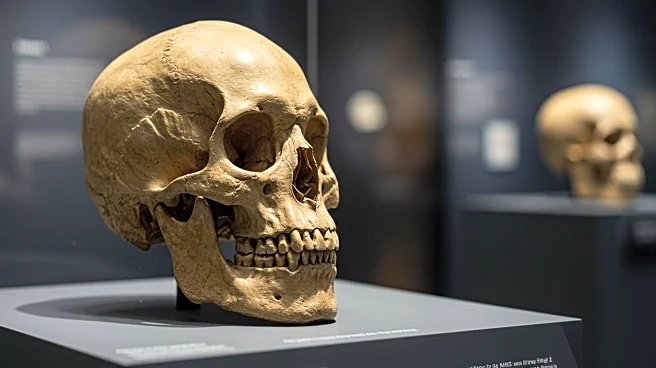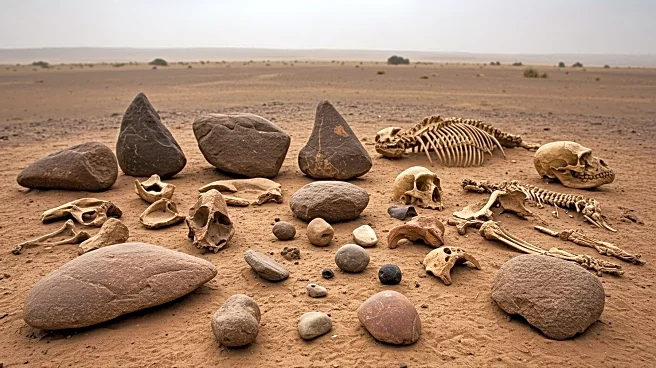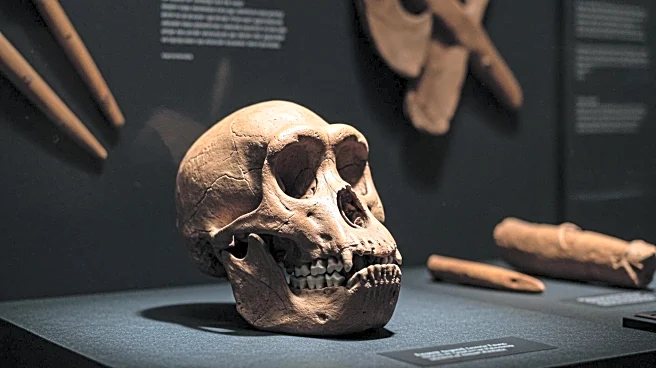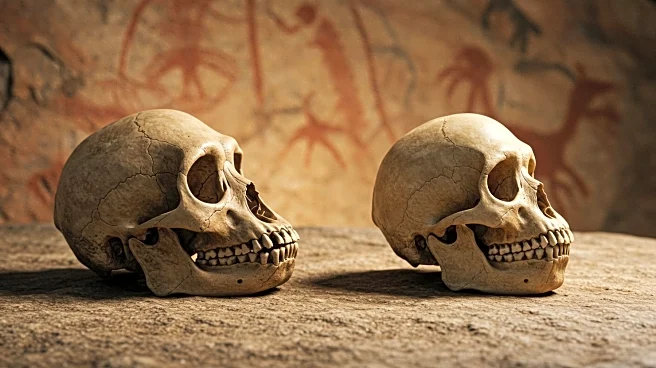What is the story about?
What's Happening?
A team of international scientists has discovered new fossils in Ethiopia that suggest Australopithecus and the oldest specimens of Homo coexisted between 2.6 and 2.8 million years ago. The discovery includes a new species of Australopithecus, providing insights into the complexity of human evolution. The research, led by Arizona State University, challenges the linear model of human evolution, suggesting a more complex 'bushy tree' of life forms that went extinct.
Why It's Important?
This discovery has significant implications for our understanding of human origins. By revealing the coexistence of different hominin species, the findings challenge traditional views of a linear progression from ape to modern human. The research underscores the complexity of evolutionary processes and may lead to revisions in the scientific narrative of human ancestry. The implications extend to anthropology, archaeology, and related fields, as researchers explore the diversity and interactions of early hominins.
What's Next?
The research team plans to examine the tooth enamel of the fossils to learn more about the diets and interactions of these species. Further fossil discoveries are needed to fully understand the relationship between Australopithecus and Homo. The ongoing research may provide new insights into the environmental conditions and evolutionary pressures faced by early hominins.
AI Generated Content
Do you find this article useful?
